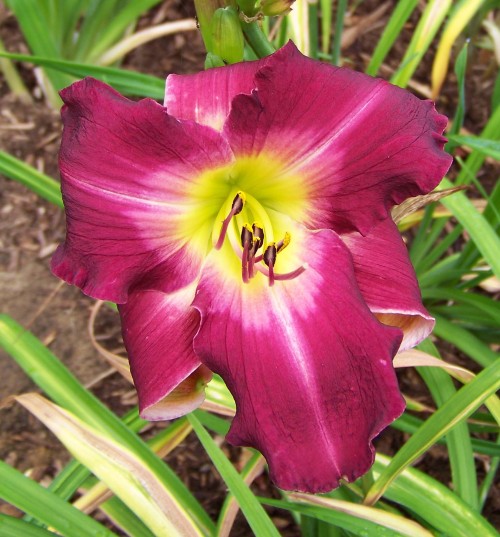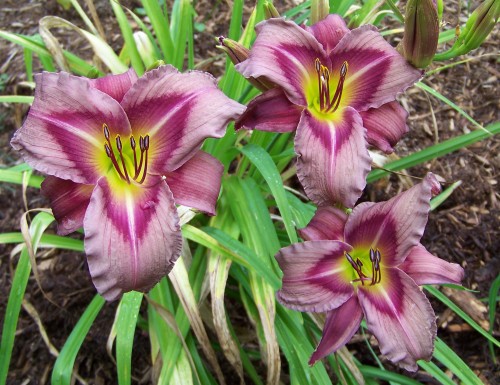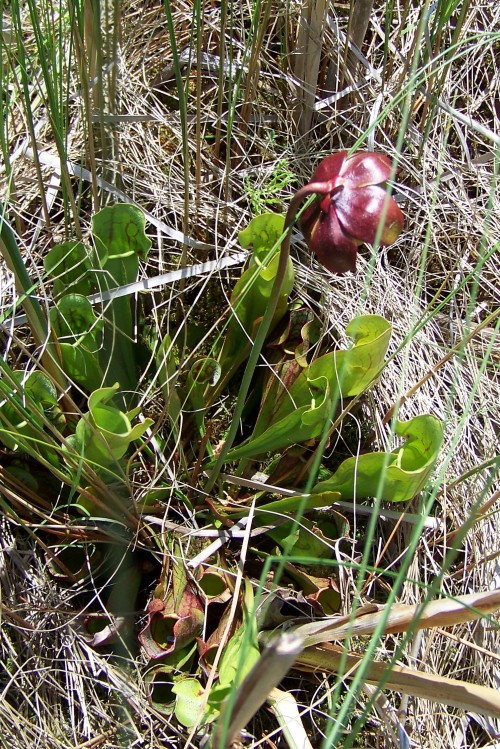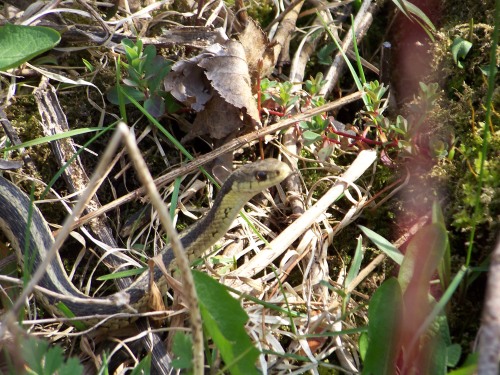
When it comes to hiking, the weather just doesn’t get any better than it was last weekend. On Sunday, we couldn’t pass up the opportunity to get out and enjoy what may be one of the last perfect days of the year. We decided to travel to Charleston Lake Provincial Park and because it was such a gorgeous day, settled on one of the more challenging trails.

We set off along the 10 km Tallow Rock Bay trail. After a short walk from the trailhead, the path divides into west and east arms of the loop, and, based on my trail guide’s recommendation, we took the west fork. The woods soon gave way to a boardwalk through a wetland area. Most of the ground was pretty dry, as we’ve had an extended period of low precipitation, but a pretty stream runs through the clearing.

A few of the trees along the boardwalk had Fall Webworm (Hyphantria cunea) nests. These nests are often confused with the better-known tent caterpillar constructions, but tent caterpillars are mostly seen in spring. Tent caterpillars and Webworms are spring and fall phenomenon.

The tree has time to recover after the spring Tent Caterpillars and grow new leaves. In the case of Fall Webworms, the tree is about to lose its leaves for the winter anyway, and can grow again in the spring. Thus, the insects don’t kill their host tree. For more on Webworms visit Jeepers! Creepers! here.

The trail has helpful distance markers. Here is RailGuy standing by the 1 KM marker shortly after leaving the boardwalk behind and re-entering the forest.

This tree is reportedly one of the oldest trees in the forest. Sadly, it seems to be dying and had already lost its leaves for the year, making its fork-tine branches more conspicuous.

The rustling of the dried leaves littering the ground brought this garter snake to our attention.

The first few kilometres of the trail are undemanding, following the gently undulating landscape up and down with few steep inclines. Rocky outcroppings bordering the trail remind you that you are on the Frontenac Arch, part of the Canadian shield. You can read more about the Frontenac Arch Biosphere Reserve here.

Many of the rocks support a rich mosaic of lichens and mosses and ferns.

The bright cerise-red centre of this plant caught my eye. I didn’t recognise it, but Seabrooke was able to identify it for me as Indian Cucumber Root (Medeola virginiana). It has already lost the blue berries it would have had earlier in the season. The berries are inedible (by people), but the waxy, tuberous roots, as the common name indicates, taste like cucumber and can be used in salads.

At one point, the trail curls around the edge of an open wet meadow, encircled with white birch trees.

Just after the 4 KM marker, a short side trail leads down to the waters of Tallow Rock Bay.

What a beautiful, peaceful spot! The water was still and quiet and a picnic table was welcomingly positioned on the little beach. We sat down and had a pleasant rest, eating the lunch RailGuy had kindly backpacked in for us.

























